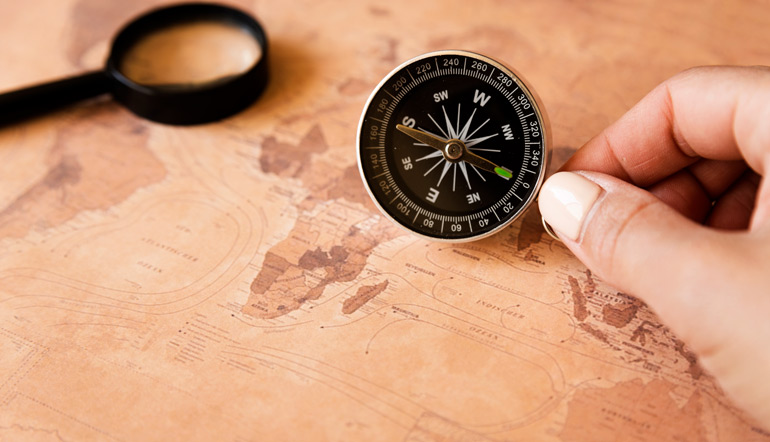Have you ever been stuck on a project and you feel like you can’t find the right answers? Sometimes assignments are due but you can’t get your brain to make sense of a project.
Try mind-mapping to declutter your brain, organize your thoughts, and stay on track to complete the projects in time.
Mind mapping is a visual tool for decluttering the brain. The true origin of mind mapping is unclear.
However, the use of graphical records to present information can be traced to third-century philosopher Porphyry of Tyre.
The use of mind mapping as a way to declutter the mind was popularized in the 1970s by British Psychologist, Tony Buzan. Tony Buzan advocated for mind mapping as a tool for boosting creativity and improving one’s memory.
Mind maps aid in brainstorming, organizing, boosting productivity, recalling, and generating new ideas.
Mind mapping allows you to visually plot out a framework on which to hang your thoughts. A mind map can be drawn on paper or software. You select one topic and let your brain wonder as you add ideas and build on what you already have.
Let’s assume you have five clients with different deliverables and due dates. To keep track of your work, you create a mind map to highlight the deliverables, due dates, research items, etc. You then create individual mind maps for each project to break it down further.
So What Are the Benefits of Mind Mapping?

Boost Creativity
During the mind mapping process, let your mind wander and build upon existing knowledge. You use your imagination to build the big picture and plan.
A study revealed that taking a peek of the color green before a creative task amplifies creativity.
Thus, it is easier for your creative juices to flow due to the colourfulness of the mind map brought about by the use of colors, images, shapes, and keywords.
Whatever you’ve mapped stands out. Things you may have missed in the first instance, become clearer when you take a second or third look.
Increase Productivity
According to a survey, 50% of respondents reported that mind mapping increased their productivity and creativity. While 51% of the respondents said that mind mapping revolutionized how they work.
When creating a mind map, you are creating a plan. You are organizing your thoughts to get a clear picture of your workload. This allows you to view each task objectively and eventually make the execution easier.
You can use mind maps in presentations and when sharing information. You quickly communicate your ideas since you are presenting one idea on one page.
Improve Memory
Memory is a mental skill that allows one to acquire, store, and retrieve information. Having a good memory is critical for any professional. Mind mapping aids in improving one’s memory as it requires you to recall, retrieve, and add information as you go along.
When developing mind maps, you use association and imagination. These are the methods used for improving one’s memory. The use of images, color, keywords, and branches help store information in the brain.
Make Concepts Easy to Understand
Since mind maps rely on the breakdown of information to the simplest form, it becomes easier to process and understand new concepts.
In a survey conducted to uncover the benefits of mind mapping in business, it was discovered that the biggest benefit of mind mapping was improved understanding of complex issues.
Uses of Mind Mapping
Organizing Projects
We live in a world where Key Performance Indicators (KPIs), determine one’s career progression. Mind mapping enables professionals to break down goals into actionable objectives and deliverables.
Mind mapping also helps in keeping track of all the deliverables and projects and hit KPIs. Since each project has it’s dedicated mind map, it’s easy to get a quick snapshot of the different projects.
Collaborating With Other People
There exist different mind mapping software and some enable you to invite people to view your mind map.
When working in teams, it is advisable to create a mind map of your project and share it with your teammates. This allows everyone to have a view or a snapshot of your work.

Generating New Ideas
Mind maps are great tools for brainstorming. Whether working in a team or solo, during the mind mapping process, you can generate and contribute unique ideas to spontaneously solve the problem at hand.
Refining Already Existing Ideas
Once you put everything down on paper, you see things connecting that you hadn’t realized before. Since you note down everything that comes to mind, you can draw relationships between ideas and points.
Ready to Develop a Mind Map?
Mind maps are colorful, clear, and understandable at a glance. As you create a mind map, it is advisable that you use a minimum of three colors to represent the topic, categories, and sub-categories.
Use these 4 steps to create your first mind map:
Step 1: Write the Topic
Place your blank paper in landscape mode. Write your topic, usually 1-2 words, at the center of the page, and then draw a circle around it.
For example, you are writing about the latest electric vehicles. At the center of your page, note down the topic, electric vehicles.
Draw a circle or a vehicle around the topic of electric vehicles. You can make the topic bold, use different colors for the letters, etc, to make your topic stand out.
Step 2: Add Categories
Once you have your topic, draw or add the categories. Also referred to as branches. These are the building blocks of the topic. The keywords that represent each idea around the topic. Each keyword should have its branch.
Use different colors to represent the keywords. In addition, use lines and arrows to emphasize points.
Following the example of electrical vehicles, your sub-branches could be the following keywords: history, model, manufacturers, legislation, benefits, drawbacks, etc.
Step 3: Add Sub-Categories
You continue building on the topic by adding the categories/sub-branches. These are finer and relevant details that add weight to your mind map. They are also represented by keywords, symbols, and stimulating images and colors.
The use of varying fonts, text sizes, and cases is highly encouraged. These subtle things emphasize the level of importance of each word and idea.
Step 4: Create a Polished Version
Once you’re done noting down all the ideas around your topic, take a step back, and review your mind map. Add new ideas that pop into your head and create the final version.
Remember to avoid cluttering your mind map, after all the whole point of the mind map is to declutter the mind.
Put Your Mind Mapping Skills to the Test With an Online Course
Before you start on your freelancing journey, you must build a strong foundation of skills.
Bundled courses can provide you with the knowledge and confidence to chase your aspirations.
Reputable providers of online education, such as Small Revolution, provide excellent curriculums for a variety of online courses.
Small Revolution provides extensive resources and up to date blogs focused on helping you grow your online career. They will keep you up to speed with all the latest tips, like mind mapping techniques, to help you succeed.


